2.5.2.3: Bryophyta
- Page ID
- 37011
Learning Objectives
- Use morphological traits and cellular components to distinguish between mosses and other bryophytes.
- Identify structures and phases in the moss life cycle; know their ploidy.
- Label a moss sporophyte and describe its development.
Mosses, Phylum Bryophyta
Most described bryophyte species diversity (around 13,000 species) belongs to the mosses. Unlike other bryophytes, mosses are exclusively leafy. Sporophytes in most species form complex capsules, involving multiple layers of structures. Members of the mosses have defied many of the typical bryophyte descriptors. For example, some mosses have evolved vascular tissue analogs called leptoids (analogous to phloem) and hydroids (analogous to xylem). Other mosses can grow quite tall: Dawsonia superba, the world's tallest moss, can grow up to be nearly 2 feet tall (50-60 cm).
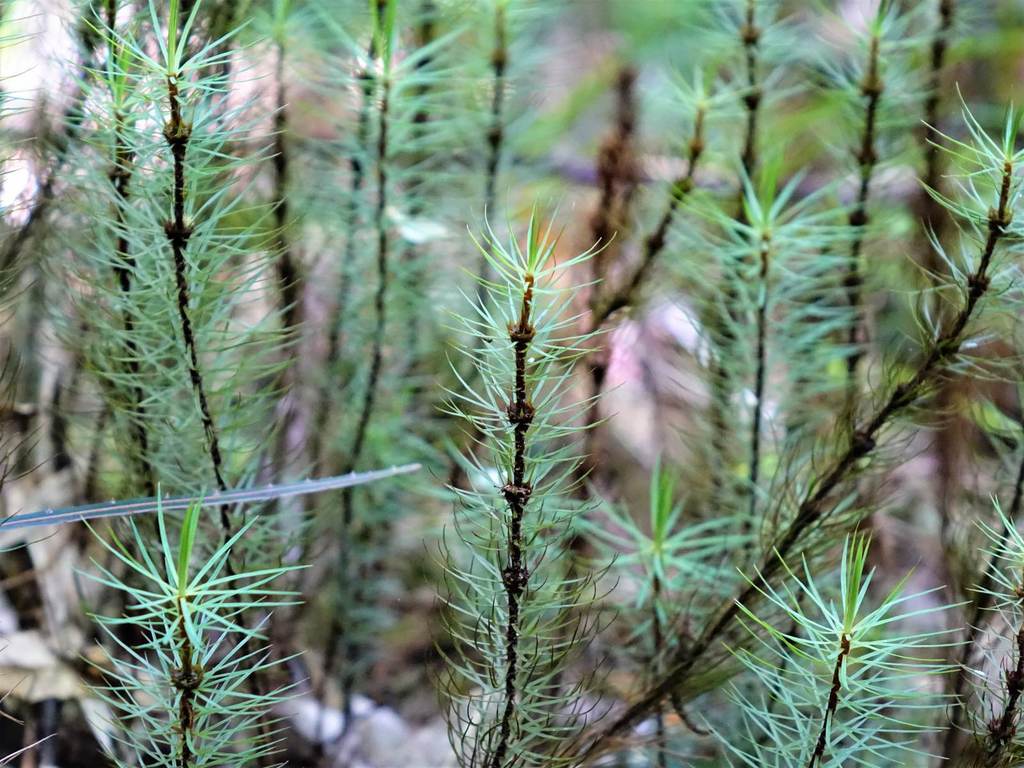
Sphagnum is an ancestral genus of mosses that grow in bogs and are commonly referred to as peat moss or peat, in its compressed form. They have large, empty cells (Figure \(\PageIndex{2}\)) capable of absorbing around 20 times their dry weight in water and can exude compounds to make their environment more acidic. Because of this, and the compounds in their cell walls, the bogs where they grow have slow decomposition, allowing plant matter to accumulate and compress over time. This makes peat, a common source of fuel in higher latitudes. It's use as fuel, flavoring (the smoke), and in horticulture for its water holding capacity have contributed to its commercial importance. Many peat bogs are frozen over for most of the year, halting metabolic activity and slowing the release of methane from anaerobic decomposition. As the climate in northern latitudes warms, so do the peat bogs, increasing the release of methane.
.jpeg?revision=1&size=bestfit&width=755&height=423)

Gametophyte Generation
Moss gametophytes have spirally arranged leaves that emerge from all sides of the stem (Figure \(\PageIndex{3}\)). In most mosses, the leaves have a central line of tissue called a costa that looks a bit like a midrib (though it is not, as bryophytes don't have lignified vascular tissue) and are only 1-2 cell layers thick. Rhizoids are produced at the base of the gametophytes. In the common haircap moss, Polytrichum commune, there are three kinds of gametophytes:
- Female, which develop archegonia at their tip. A single egg forms in each archegonium. (see Figure \(\PageIndex{6}\))
- Male, which develop antheridia at their tip. Multiple swimming sperm form in each antheridium. (see Figure \(\PageIndex{5}\))
- Sterile, which do not form sex organs.
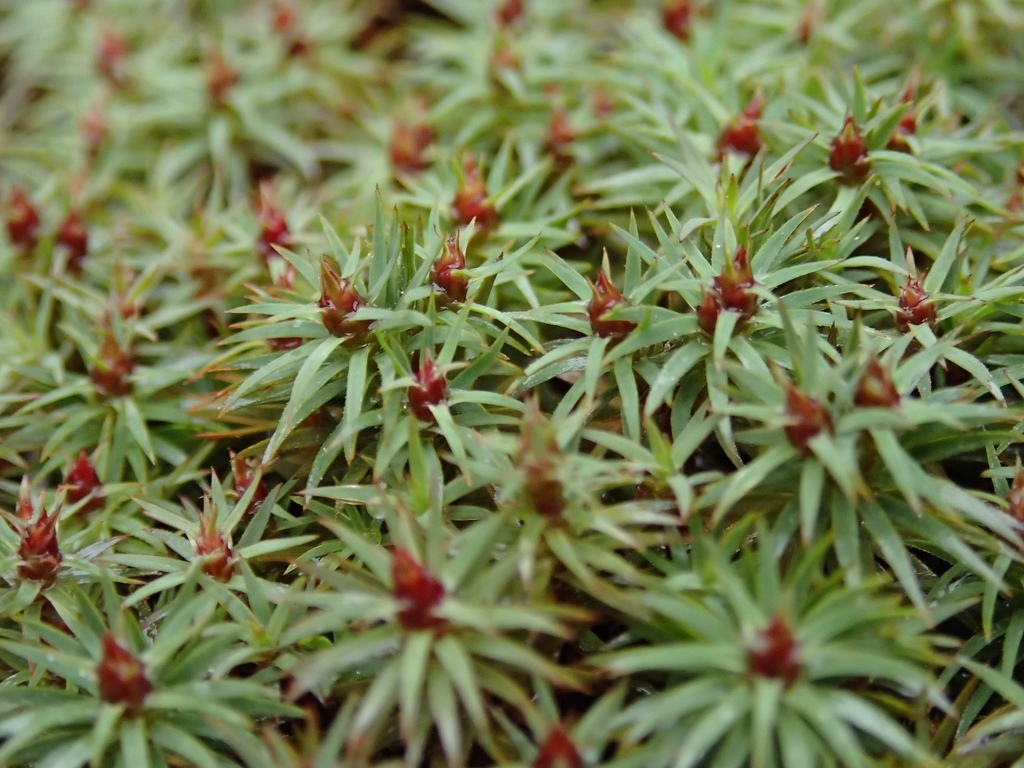
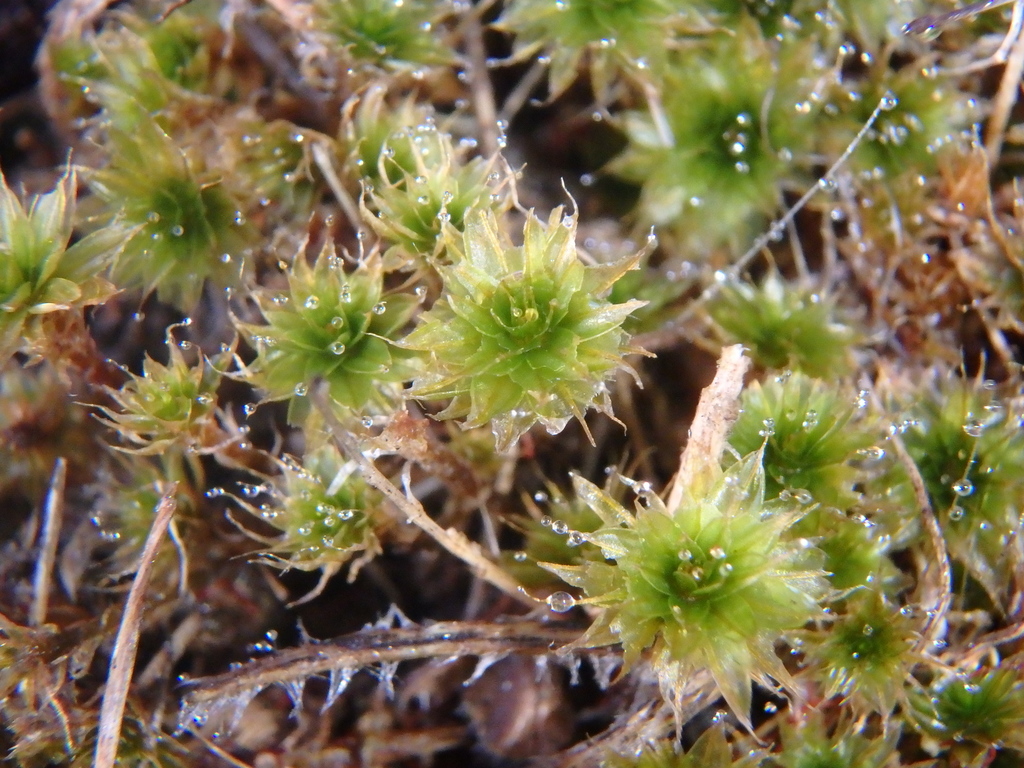
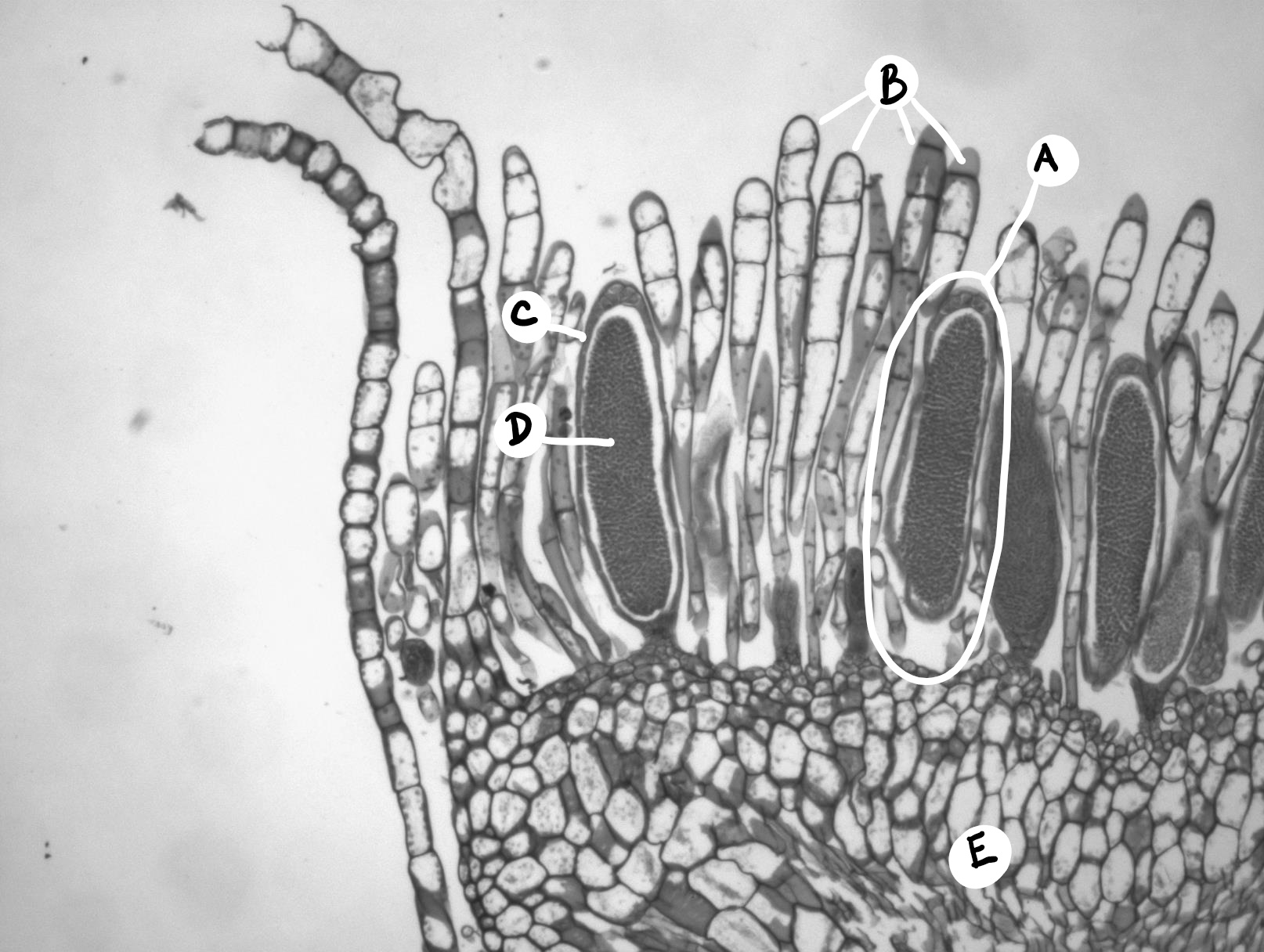
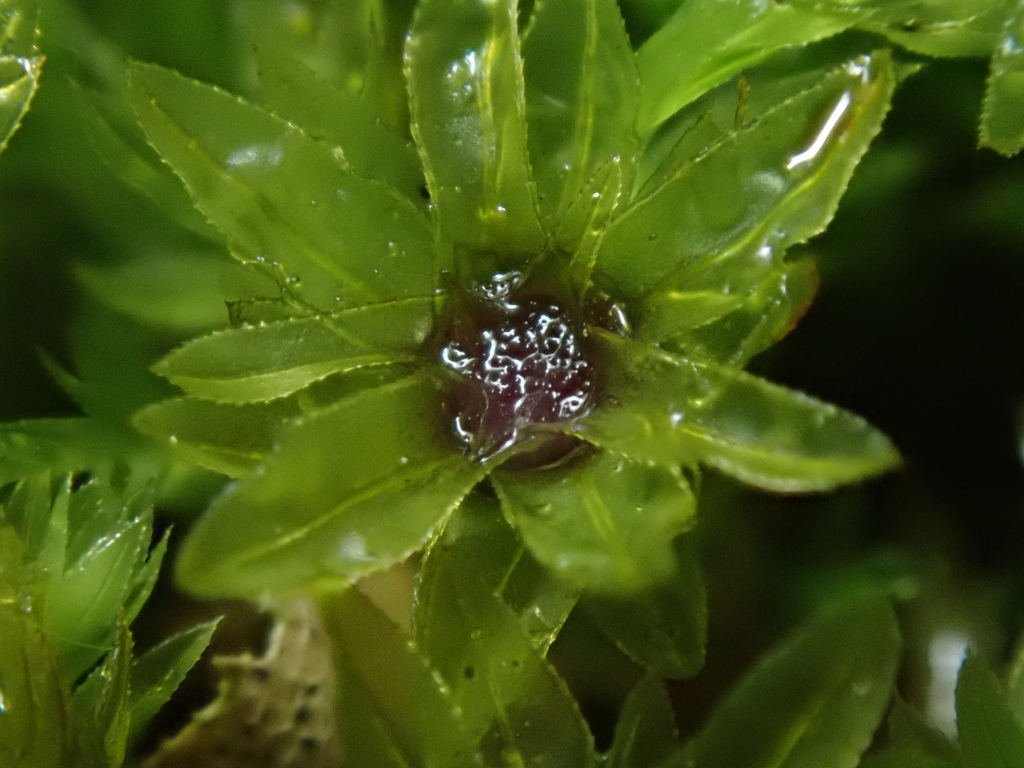

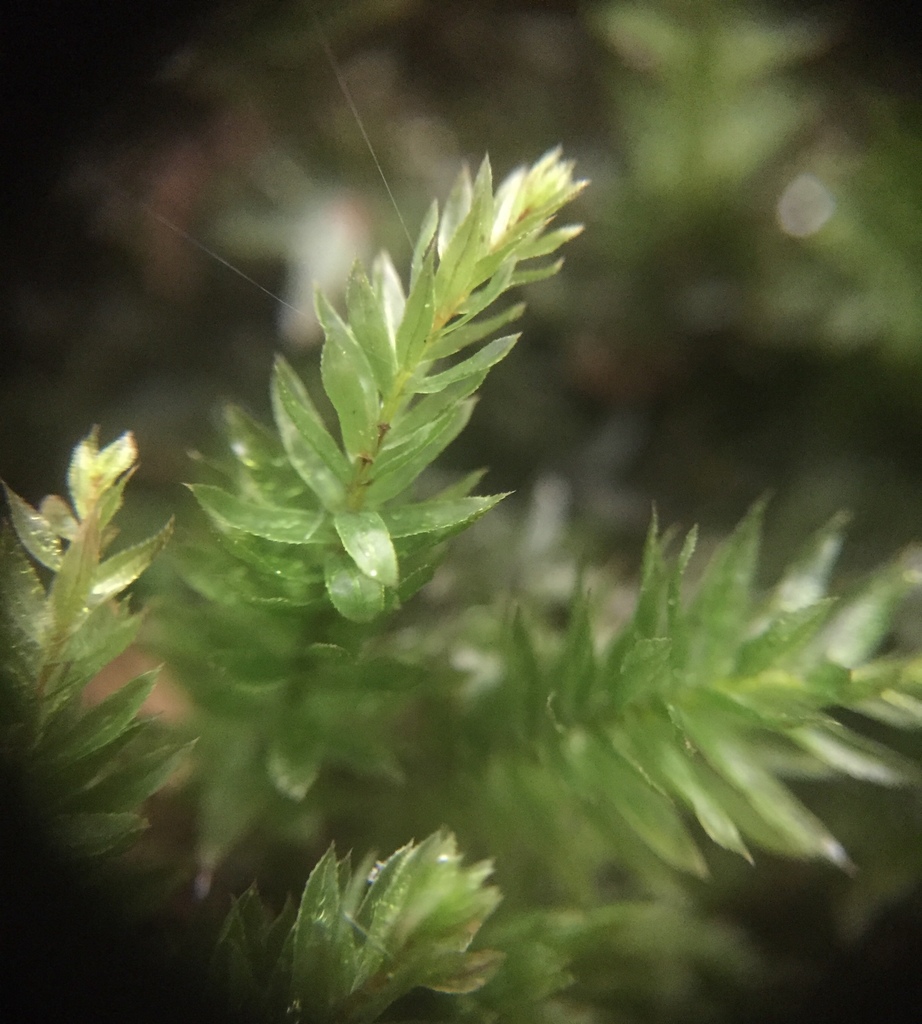
Sporophyte Generation
Moss sporophytes have a complex set of structures at the top of a seta. When the sporophyte emerges, it tears off a piece of the female gametophyte's archegonium, leaving a coating called the calyptra. Mosses have a capsule, where the sporangia are housed. This capsule has a lid-like structure called an operculum, which pops off when spores have matured. Depending on the moss, the sporophyte may have a peristome (teeth-like sheets of cells that aid in spore dispersal). True stomata are present for gas exchange.

When the calyptra falls off, another feature of the sporophyte is visible: the operculum. This is a lid-like structure on the capsule that pops off when the spores are mature. Most mosses have a structure under the operculum that lines the capsule opening, called the peristome. The peristome is a series of cellular flaps (peristome teeth) that line the edge of the capsule opening and aids in spore dispersal via hygroscopic movements.
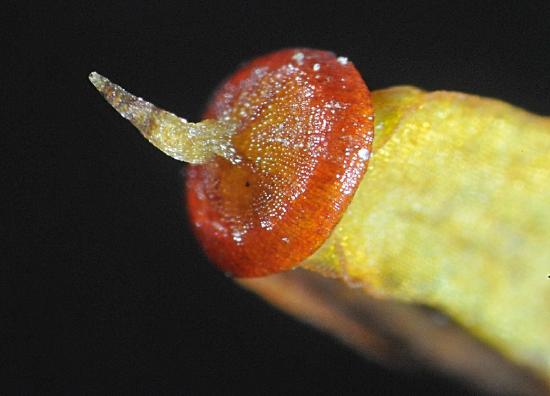
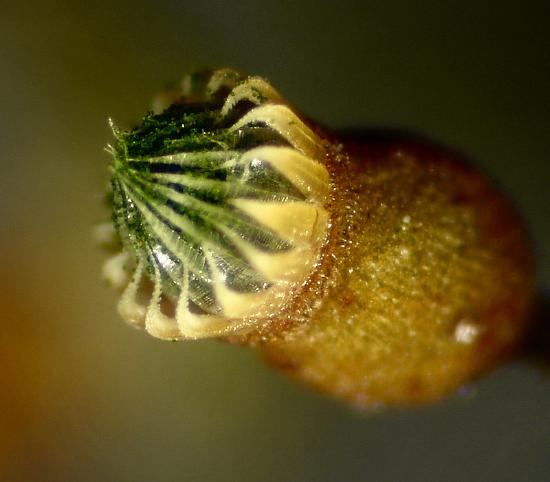
Tetraphis moss (Tetraphis pellucida) produces both asexual propagules (gemmae) and spores, which result from sexual reproduction (Figure \(\PageIndex{9}\)). In 1991, Robin Wall Kimmerer found that spores were dispersed an average of 20 times farther from the parent plant than gemmae were, but gemmae established more easily. Each reproductive strategy thus served a different purpose: gemmae helped the plant spread locally, and spores were important for colonization of an entirely new location.
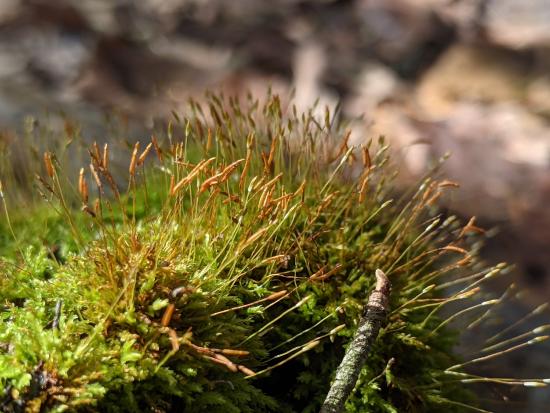
Mnium Life Cycle
Male gametophytes form antheridia at the top of the gametophyte in a structure called the perigonium or antheridial head (Figure \(\PageIndex{10}\)). These are cup-shaped, and commonly referred to as splash cups. In early spring, raindrops splash sperm from male to female plants. These swim down the canal in the archegonium to the chamber containing the egg. The resulting zygote begins the sporophyte generation.
Mitosis of the zygote produces an embryo that grows into the mature sporophyte generation. It consists of:
- A foot, which absorbs water, minerals, and food from the parent gametophyte
- A stalk (seta), at the tip of which is formed a sporangium (the brownish objects in the photo).
The sporangium is
- filled with spore mother cells
- in most cases, ined by a peristome around the opening
- sealed by an operculum
- covered with a calyptra. The calyptra develops from the wall of the old archegonium and so is actually a part of the gametophyte generation. It is responsible for the common name ("haircap moss") of this species.
During the summer, each spore mother cell undergoes meiosis, producing four haploid spores - the start of the new gametophyte generation. Late in the summer, the calyptra and operculum become detached from the sporangium allowing the spores to be released. These tiny spores are dispersed so effectively by the wind that many mosses are worldwide in their distribution. If a spore reaches a suitable habitat, it germinates to form a filament of cells called a protonema. Soon buds appear and develop into the mature leafy shoots.
Thus the gametophyte generation is responsible for sexual reproduction. The sporophyte generation is responsible for dispersal.

Attribution
Content by Maria Morrow, CC BY-NC, except the following:
- Life cycle text from 16.3B Moss Life Cycle from Biology by John. W. Kimball (licensed CC-BY)
- Paragraph that goes with Figure \(\PageIndex{9}\) by Melissa Ha (licensed CC BY-NC)


